This web page describes various approaches to research in the field of Sport Biomechanics.
Research Interests
by Jesús Dapena
(email: dapena@iu.edu)
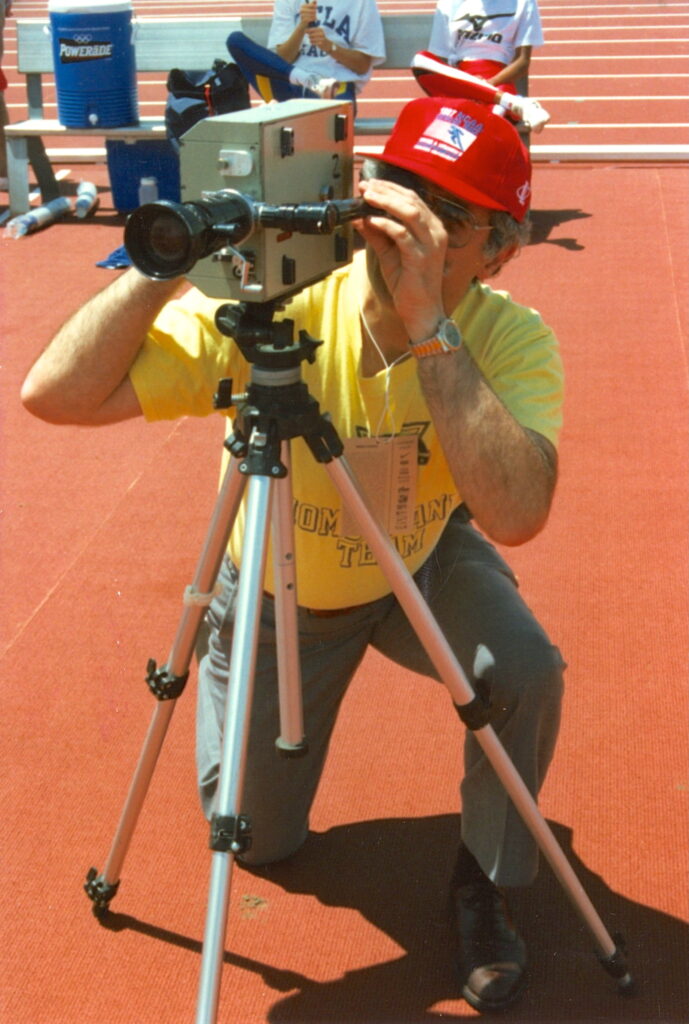
(NOTE: These explanations and plans reflect my thinking in the 1980s and 1990s.)
Biomechanics of Human Performance
Biomechanics
The basis for the field of Biomechanics is that the laws of mechanics apply to living organisms just as well as they do to inanimate objects. The structural stresses of a tree, the swimming of a shark and the takeoff of a long jumper are all subject to the laws of mechanics in the same way as a square block of wood sliding down an inclined plane in the classical physics experiment.
Biomechanics is a diverse interdisciplinary field with branches in disciplines as varied as Zoology, Botany, Physical Anthropology, Orthopedics, Bioengineering and Human Performance. In all of these disciplines the general purpose of Biomechanics is the same: to understand the mechanical cause-effect relationships that determine the motions of living organisms. However, within each discipline Biomechanics tries to solve problems specific to that discipline: In Zoology, Botany and Physical Anthropology the main goal is the understanding of the relationships between structure and function; in Orthopedics and Bioengineering the main focus is also on structure and function, but with a special added emphasis on practical applications, such as the development of prosthetic devices. In Human Performance, Biomechanics contributes to the description, explanation, and prediction of the mechanical aspects of human exercise, sport and play.
Basic versus Applied Biomechanics
We can say that Biomechanics research has two main facets within Human Performance: “basic science” and “applied science”. As a basic science, it tries to understand how the human body functions mechanically in a situation of maximum effort. As an applied science, it tries to help athletes to improve their performance and/or to help them to avoid injury.
When an athlete achieves a good performance, much of it depends on the fitness of the athlete (strength, quickness, endurance). But the efficiency with which the athlete uses his/her body also determines part of the value of the performance. This efficiency can be improved through the coordination of the motions of different body parts in ways that permit the exertion of larger forces by the muscles, more appropriate timing of stretch reflex mechanisms, longer ranges of motion of certain limbs, etc. Thus, the value of a performance depends on the fitness of the athlete, but also on the technique used.
The main objective of the basic science facet of biomechanics is to understand in detail the cause-effect mechanisms that make some techniques better than others, and ultimately to find the optimum technique: what sequence of movements would lead to the best possible performance.
The basic science facet outlined above has an immediate bearing on applications: Once you know the optimum technique (or elements of it), it should be possible to examine individual athletes, and determine what technique defects are preventing them from reaching their ultimate potential. Subsequent correction of these defects should lead to improved performance.
Basic Research
"Inverse Approach" versus "Direct Approach"
There are two major approaches to basic research in Biomechanics. In the “inverse approach” the investigator quantifies the movements that occurred during a recorded sports event, and calculates the causal factors (momentum, acceleration, and ultimately, muscle force) that led to the observed movements. This process is generally carried out through film or video analysis, making extensive use of computers.
In the “direct approach” the researcher starts from causal factors (for instance, muscle tensions or ground reaction forces measured directly with a force plate), and subsequently calculates the accelerations, velocities and changes in location that result. An important subarea within the direct approach is computer simulation, in which the researcher makes hypothetical alterations in some of the causal factors, and finds out what effects these alterations would have had on the motions of the subject, and consequently on the value of the performance.
My Work on Track and Field Athletics and on Research Methodology
One of my two main lines of research is the mechanics of high jumping. The other one is my work on the mechanics of throwing events, particularly in track and field. I first started working primarily on the hammer throw, but I have now changed my emphasis to the discus throw. My ultimate goal is to reach a complete (or almost complete!) understanding of the mechanisms involved in the techniques of these sport events. This will allow me to diagnose with a high degree of confidence the technique defects of individual athletes. The subsequent correction of these defects should lead to improved performance results and also to greater safety during the execution of the performance.
In a different facet of my work, I contribute to improve the methodology used for research in Biomechanics. I do not have a special interest in the development of methodology, but I have found it necessary for the advancement of my research on human motion itself. In the past, I have worked on the development of three-dimensional (3D) film analysis, and also on computer simulation methods. I am currently developing computer graphics applications. In the future, I plan to resume my work on computer simulation, because this methodology will probably be very useful for the study of the high jump takeoff.
My Students' Research
My graduate students have been involved in some of my work on methodology. I have also contributed significantly to my students’ research on human motion. My students’ projects on human motion do not follow a single line of research, because each student has different interests. Still, we could group the students’ projects into two categories: the study of flail-like motions, and an analysis of hurdling technique.
Main Lines of Basic Research
High jumping
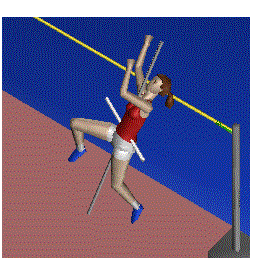
My initial main interest was the biomechanics of high jumping. This remains one of my two main areas of research (together with track and field throwing events). When I was a graduate student, I made the first 3D analysis of high jumping. (For that, I first had to develop the necessary methodology.) Later on, I went into deeper analyses. These studies focused separately on various aspects of the run-up, takeoff and bar clearance phases of the jump. I have also recently completed a multi-part project on the twist rotation in high jumping which is currently in various stages of manuscript preparation and submission for publication.
Today, the high jump is one of the sports activities that is best understood from a biomechanical standpoint. We now understand very well how the rotation over the bar is produced; the mechanisms involved in the run-up and takeoff are also much better understood than before, although not nearly as well as the bar clearance. In the future, I plan to complete the study of the airborne phase. After that, I will concentrate on the takeoff. I will use computer simulation as one of my main research tools to study the takeoff phase. I have done a lot of work in the simulation of airborne motions, but the simulation of the takeoff phase will be quite a different undertaking which will require a large amount of work in the development of new algorithms and computer programs.
(For an explanation of the mechanism that leads to pronation of the ankle of the support foot during the takeoff phase of a high jump, and a video showing it, go HERE; to see computer animations of a high jump and of an artificial high jump generated using computer simulation, go HERE.)
Hammer throwing

The hammer throw involves very interesting mechanical processes. But its complexity and its marked 3D nature have made biomechanists shy away from it. In the early 1980s, I had the appropriate tools and research experience to study the hammer throw. So I started a long-term comprehensive research project on this event.
The beginning of the project was challenging. Biomechanical information on the hammer throw virtually did not exist. I tried various approaches to check what parameters might provide information leading to a better understanding of the event. The pieces of the puzzle finally fell into place. I found that the preliminary winds in the early part of the throw are very important. And that the same goes for the single-foot support phases that occur later on during the full turns. This contradicted the widely held coaching belief that these parts of the throw do not contribute much to the performance. I also found that hammer throwers are unable to “counter with the hips” in the late part of the throw. This is a technique that coaches often recommend, and which in theory should be advantageous. But I found that it would require unrealistic strength in the latissimus dorsi muscles.
Discus throwing
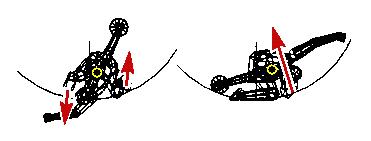
Other Lines of Basic Research
My research experience on the hammer throw, together with local availability of elite discus throwers, got me interested in the discus throw. As in the hammer throw, little or no research had been done on the discus using 3D methods. But both throws involve a marked rotational motion about the vertical axis. Partly because of this similarity, my previous work on the hammer greatly facilitated my work on the discus.
I first made a pilot study on the discus. I found that the main interaction between the athlete and the ground occurs early in the throw, while the main interaction between the athlete and the discus occurs near the end of the throw. This specificity of interactions in the different parts of the throw was not previously known. Most coaches and athletes believe that the final part of the throw is by far the most important one. However, my results indicate that practitioners also need to focus on the crucial generation of angular momentum for the combined athlete-plus-discus system in the early part of the throw. At this point the results are still preliminary, based on very few subjects. I will now repeat the study with a larger number of elite discus throwers. I have a grant from USA Track & Field to carry out this project in 1996.
A line of theoretical reasoning suggests that it would be beneficial to release the discus while the feet are still in contact with the ground, but many throwers release the discus after the feet have left the ground. After I complete the previous study, I will investigate the reasons for this apparent discrepancy between theory and practice in the discus throw.
Methodology
(a: Film analysis methods)
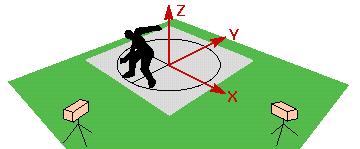
Film (or video) analysis is the main tool in most Sport Biomechanics laboratories. We start by filming the athletes during competitions. The films are processed, and then we project them one frame at a time onto a digitizing tablet. An operator uses a cursor to measure (“digitize”) the positions of a series of body landmarks (usually 21) in each photograph. The coordinates are entered into a computer. (You can follow a similar process with video cameras.) Until recently, all laboratories used two-dimensional (2D) analysis. In such studies, you simply multiply the coordinates taken from the digitizer by a scale factor to obtain real-life coordinates. However, this 2D simplification of 3D motions has obvious limitations, so lately many laboratories have adopted 3D methodology. This involves filming with two cameras simultaneously. The digitized data from the films of the two cameras are used to compute the 3D coordinates of the body landmarks.
In the early 1980s, our lab was one of the first to adopt 3D film analysis for routine use. This was Abdel-Aziz & Karara’s “Direct Linear Transformation”. I also worked myself on the development of other methods for 3D film analysis. I have also compared the accuracy of video-based versus film-based 3D analysis with one of my students, Rosa Angulo.
The development of 3D film analysis methodology is an area in which I am not currently working. I feel that this tool is already very useful in its present state of development. Therefore, it’s time to use it to investigate human motion, rather than to keep developing the methodology.
(b: Computer graphics)

The 3D body landmark coordinates computed from the film data serve as input for other computer programs. These programs use a mathematical model of the human body to calculate a variety of mechanical parameters. Other computer programs produce graphics. These graphics help to interpret the data and later also to communicate the findings to other researchers and to practitioners. I am currently deeply involved in the development of animation using computer graphics. (To see a rather unusual computer graphic, press HERE.)
(c: Computer simulation of airborne motion)
Most of my research has followed the “inverse approach”. But part of it has focused on the “direct approach” (or simulation). I started with the development of a method for the simulation of airborne movements, my Ph.D. dissertation topic. That methodology became then a key tool for my latest research on the twist rotation of high jumping. (See above.)
(d: Computer simulation of ground-supported motion)
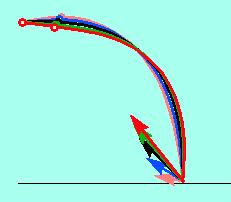
I subsequently expanded the airborne simulation method to handle the 2D (and later 3D) simulation of pole vaulting. The motions of the limbs relative to each other affect how the hands of the vaulter press on the pole. The reaction forces determine the subsequent motions of the athlete. It is possible to use this computer model to investigate the effects of diverse motions of the arms and legs on the overall motion of the vaulter, and thus on performance. This method required the parallel development of a mathematical model of the vaulting pole. This extended project resulted in two publications with one of my students (Teresa Braff) and a Ph.D. dissertation by another student (Orly Nicklass).
In the future, I plan to use simulation to study the high jump takeoff (see above). The different nature of these two events will require the development of a new method. However, the experience gained with the pole vault may be helpful for the development of the high jump takeoff simulation.
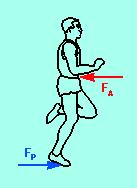
(e: Computer simulation of sprinting)
I also used simulation to quantify the effects of altitude and wind on the times of track and field sprinters. Tailwinds and the rarified air found at high altitude help sprinters to achieve better times by reducing air resistance. I developed a mathematical model of the sprinter that I incorporated into a simple computer simulation program. The program calculates, from the time, altitude, and wind conditions of any 100-meter race the approximate time that the same sprinter would have achieved in “standard” conditions (zero altitude and wind). You can use the method to adjust all sprinting times to standard conditions. This helps to provide a more objective assessment of the value of the performance of each sprinter.
Other Projects with Students
(f: Flail-like motions)
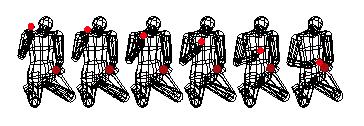
Flail-like motions of human limbs can make the end of the distal segment reach large velocities. A typical example is the tennis serve. In some cases, flail-like motions are planar (for instance, a straight forward kick or chopping wood with an axe). But in others they are markedly three-dimensional (for instance, a baseball pitch or a tennis serve). Some of my graduate students (Michael Feltner, Chul-Soo Chung, Rafael Bahamonde, and Jacob Levanon) have studied various flail-like motions under my guidance (baseball pitch, volleyball spike, tennis serve, and soccer kick, respectively). As a result, we now understand what makes some flail-like motions be planar and others three-dimensional. Further work on flail-like motions should seek a better understanding of what makes the tip of the distal segment reach large velocities. I will keep leaving this work to the initiative of my students; my role will be to provide guidance and support.
(g: Hurdling)

With one of my students (Craig McDonald), I analyzed the mechanics of track and field hurdling. The women’s hurdles are lower than the men’s, but the women traveled higher over their hurdle than the men. Therefore, they did not benefit fully from the lower hurdle. However, if the women reduced the height of their jump over the hurdle they would have a problem: They would have less time available in the air to prepare the legs for the landing. The result would be a braking of the forward motion during the landing. We also found that the motion of the trailing leg in the air plays an important role in the preparation for the landing. A far backward position of this leg during the hurdle clearance should facilitate a landing with less loss of forward speed.
Applied Research
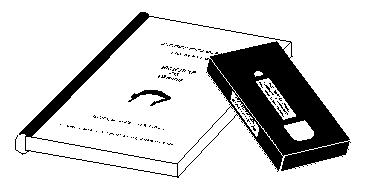
Collaboration with Sports Governing Bodies
My basic research on high jumping is complemented by applied research work. I have been doing this type of work regularly for USA Track & Field (the governing body for track and field athletics in the United States) since 1982. I have also done it occasionally for the United States Olympic Committee and the International Olympic Committee. In this work, members of our lab film the top high jumpers during competitions. The films are then digitized, and relevant mechanical parameters of the motions are calculated. After the results are interpreted, a report is sent to each athlete and coach.
These reports start with a description of the optimum technique in high jumping. Then, I use numerical data and graphical information to describe the strong and weak aspects of each athlete’s technique. Finally, I give recommendations for possible changes that might lead to improvements in performance. The reports are accompanied by videotapes of solid-figure computer animations that explain to the athletes their technique defects. The animations sometimes also show what the athletes’ jumps would look like after implementing changes. The athletes can use these animations to visualize the technique changes that they need in order to improve performance.
Benefits from Applied Research to Basic Research
This applied research work has been a good complement to our basic research. We follow the development of top-caliber athletes from one year to the next. This allows us to monitor the technique alterations associated with changes in performance. Through this process we acquire a better understanding of the cause-effect mechanisms of these sports events. In addition, many of our graduate students gain valuable field experience.
The applied research activities go hand in hand with the publication of papers directed to coaches and athletes, my participation as a lecturer in clinics, and other activities that should be considered service rather than research.
Grant funding from USA Track & Field and the U.S. Olympic Committee (and in one occasion from the International Olympic Committee) has contributed to support these applied research projects. The help that our laboratory has provided to American athletes is appreciated by USA Track & Field and the U.S. Olympic Committee. It has greatly encouraged these sport governing bodies to provide us with grant funding. This funding has supported not only our applied research but also our basic research. This is a valuable source of funding for us.
Research: Plans for the Future

(fortune teller, posted by beasternchen in Pixabay, free download)
I plan to continue my lines of basic research on the high jump and on the discus throw. For this, I will probably work also on the development of research methods, in particular in computer simulation. My students will be free to choose the directions of their work; I will keep guiding them through their research. I will also maintain my solid relationship with USA Track & Field and the U.S. Olympic Committee. My applied research will continue to be centered primarily on high jumping, with some occasional “forays” into other sport events.
